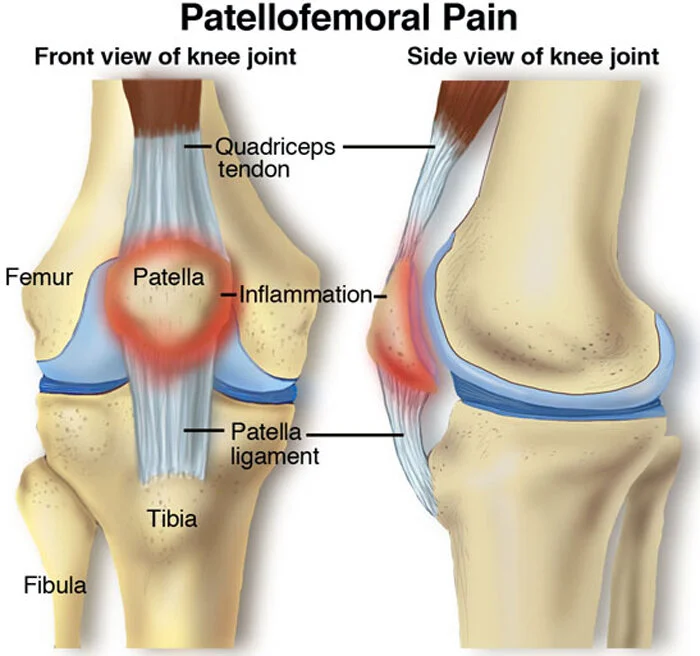PHYSIO FOR KNEE PAIN - SUTHERLAND SHIRE
PATELLO-FEMORAL PAIN SYNDROME
Have you ever experienced pain around your knee cap when running, going up and down stairs or even just when sitting down for long periods? It’s a common condition in runners within the Sutherland Shire, and as Physio’s we see it a lot.
If you have, you probably have developed patello-femoral pain syndrome (PFPS). This is the blanket term used for conditions which cause pain around the knee cap.
PFPS is extremely common with 23% of the general population experiencing it in their lifetime. It is particularly prominent for adolescents with approximately 29% of adolescents experiencing this condition, with females being at a higher risk.
Due to the usually non-traumatic nature of this condition, a lot of people will ignore this pain which can lead to major problems down the track. If left untreated, symptoms can persist and most people will have unfavourable outcomes 5-8 years after their initial pain.
Early diagnosis of PFPS is important so correct treatment and rehabilitation can take place. Your physiotherapist will look at your range of movement and movement patterns, your strength and balance and postural control. With this information, an individualised rehabilitation program will be developed to address your specific impairments in order to treat and fix your condition.
Exercise therapy is considered to be the best practice for the treatment of PFPS. This includes strengthening exercises for your hip and knee, stretching to improve range of movement, particularly around the hip, knee and ankle and aerobic exercise. Joint mobilisation, taping and neuromuscular training are also an effective treatment option for this condition. As well as activity modification and gradual re-loading, both being essential for your eventual return to activity.
A recent study found that the pain and disability resulting from patello-femoral pain not only limits short-term performance in daily and physical activities, but also has the potential to interfere with long term social participation, as 90% of the patients reported pain up to 4 years after the onset of symptoms, and 25% reported significant symptoms up to 20 years.
So the time to finally address your knee pain is now. That niggling pain you've had around your knee cap for years is doing more damage than you think. With a personalised exercise program you can fix the pain and improve the movement and control of your entire body, having you moving better than ever!
References:
Capin JJ, Snyder-Mackler L. The current management of patients with patellofemoral pain from the physical therapist’s perspective. Ann Joint 2018;3:40.
Witvrouw E, Callaghan MJ, Stefanik JJ, Noehren B, Bazett-Jones DM, Wilson JD, Earl-Boehm JE, Davis IS, Powers CM, McConnell J, Crossley KM. Patellofemoral pain: consensus statement from the 3rd International Patellofemoral Pain Research 678 held in Vancouver, September 2013. Br J Sports Med 2013;48(6):411-414.

